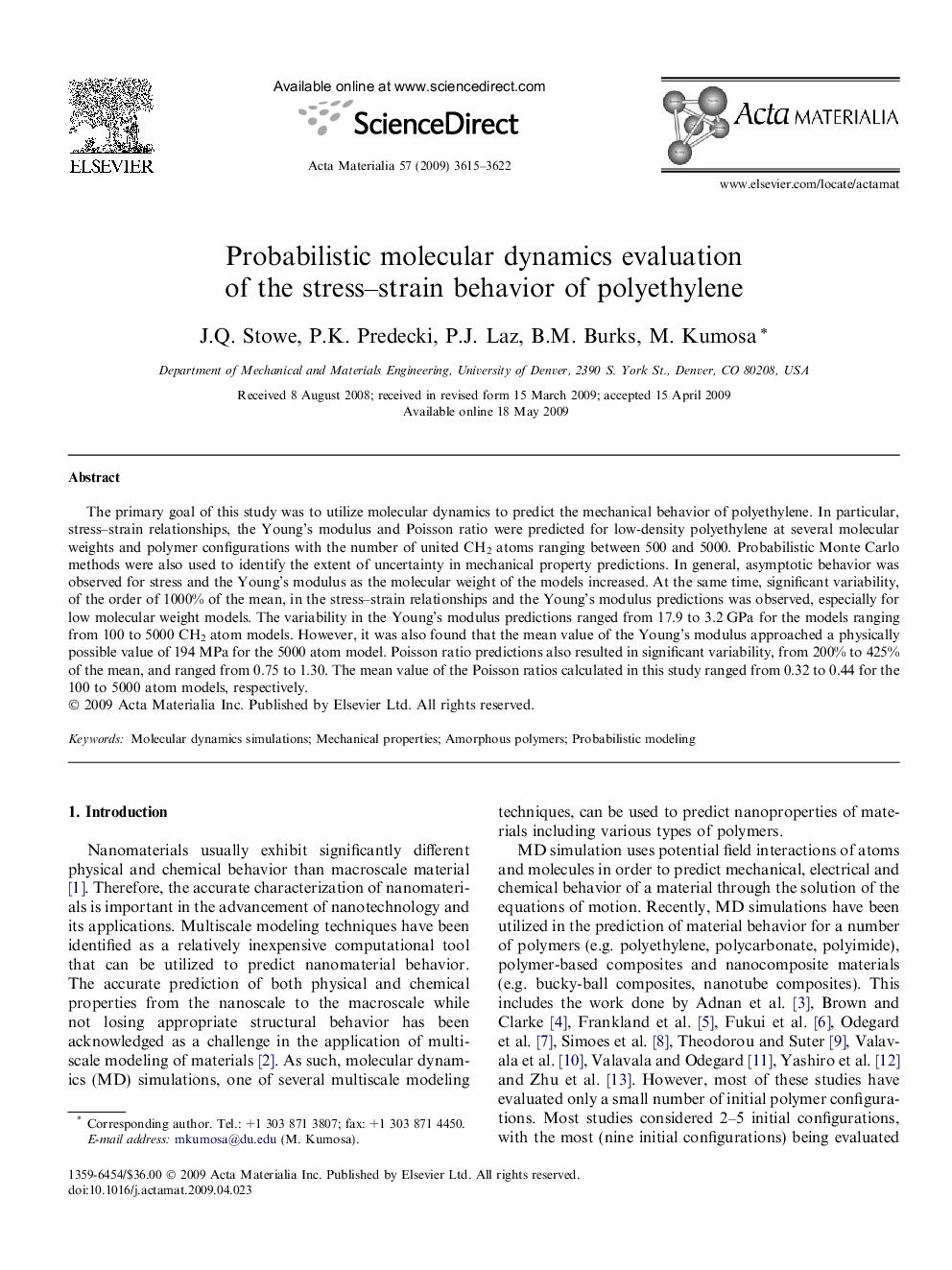| Article ID | Journal | Published Year | Pages | File Type |
|---|---|---|---|---|
| 1448322 | Acta Materialia | 2009 | 8 Pages |
The primary goal of this study was to utilize molecular dynamics to predict the mechanical behavior of polyethylene. In particular, stress–strain relationships, the Young’s modulus and Poisson ratio were predicted for low-density polyethylene at several molecular weights and polymer configurations with the number of united CH2 atoms ranging between 500 and 5000. Probabilistic Monte Carlo methods were also used to identify the extent of uncertainty in mechanical property predictions. In general, asymptotic behavior was observed for stress and the Young’s modulus as the molecular weight of the models increased. At the same time, significant variability, of the order of 1000% of the mean, in the stress–strain relationships and the Young’s modulus predictions was observed, especially for low molecular weight models. The variability in the Young’s modulus predictions ranged from 17.9 to 3.2 GPa for the models ranging from 100 to 5000 CH2 atom models. However, it was also found that the mean value of the Young’s modulus approached a physically possible value of 194 MPa for the 5000 atom model. Poisson ratio predictions also resulted in significant variability, from 200% to 425% of the mean, and ranged from 0.75 to 1.30. The mean value of the Poisson ratios calculated in this study ranged from 0.32 to 0.44 for the 100 to 5000 atom models, respectively.
